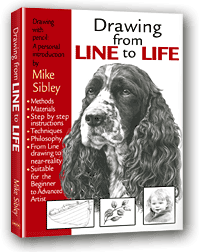Teaching is one of the best ways of really getting to know a subject. To deconstruct, organize, and deliver fairly complex concepts to someone else requires a bit of soul-searching. This has been a great reminder that drawing is a complex, evolving set of techniques that each of us adapts to their own particular style as well as for each subject they are drawing. My hope is that I can get across some of the fundamental ideas and provide a basis for improving her drawing ability without forcing my particular style into the lessons.
As part of the preparation for the sessions, I recommended two books that were instrumental in helping me get started with drawing realistically. In order of complexity, they are J.D. Hillberry's Drawing Realistic Textures in Pencil, a concise guide to using charcoal, graphite, and carbon pencil to create realistic textures.
The more advanced book was written by my friend and mentor, Mike Sibley, titled, Drawing from Line to Life. Mike's book is comprehensive and covers the entire drawing process from sketching to realistic drawings.
 I'll be posting a review of each of these books in upcoming blog entries. If you're looking to get started with drawing, I'd highly recommend J.D. Hillberry's book. If you've drawn for some time but are looking for a more thorough coverage of the challenges of pencil drawing, Mike's book is a great step up.
I'll be posting a review of each of these books in upcoming blog entries. If you're looking to get started with drawing, I'd highly recommend J.D. Hillberry's book. If you've drawn for some time but are looking for a more thorough coverage of the challenges of pencil drawing, Mike's book is a great step up.

No comments:
Post a Comment